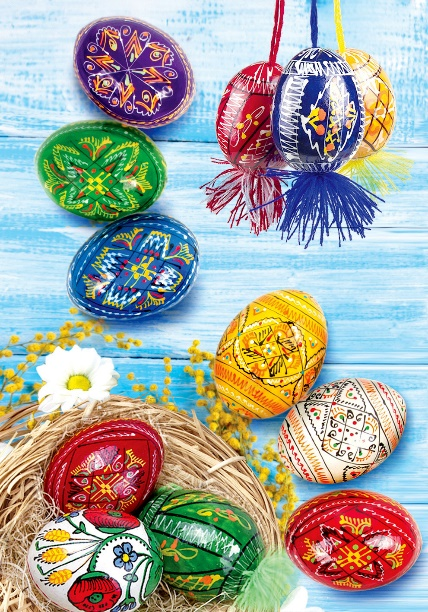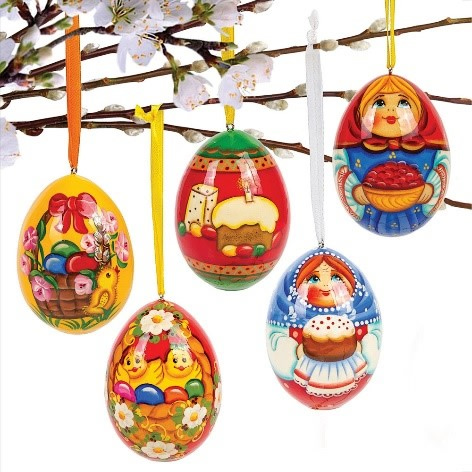Bestsellers

History of Pysanky Eggs
Of all the Eastern European Easter eggs, pysanky are positively the best known. The name pysanky for the holiday eggs comes from Ukraine, where the pysanky eggs are natives to the land. In ancient times, they were used as more than just decorative objects in the home - pysanky eggs were infused with magical powers to ward off evil, encourage marriage & help young couples with fertility. Ukrainian pysanky eggs were kept in the home to ensure a good harvest & milk production. The decorative eggs were given as gifts after they were created, which was also said to have brought good fortune to those who made them! Design motifs of the traditional Ukrainian pysanky eggs date back to early Slavic cultures, pre-Christian times even. The intricacy of the painted Easter egg designs is not the only thing that makes them so beautiful - precision and symmetry play a huge role in the designs of the Ukrainian pysanky eggs! Younger families that follow older Slavic and Ukrainian traditions cannot do Easter without pysanky eggs!
Traditional Ukrainian pysanky eggs were also decorated with hidden symbols and designs that carried meanings and good wishes. Horses on the eggs symbolized wealth and prosperity. Flowers symbolized wisdom, beauty and elegance while birds carried the meaning of spring and fertility. Oak leaves on the pysanky eggs meant strength and persistence and pine cones represented growth and eternal life! Crosses drawn on the traditional Easter eggs represented Christ and roses – love!
Pysanky egg color meanings
The colors of the handmade, hand painted Ukrainian eggs also had a meaning. White eggs were a symbol of purity, yellow – sunshine and warmth. Orange eggs represented strength, red ones – happiness! Blue colored eggs had the meaning of the sky, lightness and good health. When painted green or brown they carried the vibrations of mother earth and all its beauty. The art of decorating the pysanka eggs is associated with the beginning of spring, the joyful holiday of Easter and the soul-searching season of fasting and preparation for the holy day of Easter!
Similarly, Russia also has a very rich history of decorating Easter eggs and painting them different colors! Russian traditional Easter eggs carry a slightly different meaning and come in a variety of diverse colors and patterns. This tradition of making the beautiful Easter eggs also carried into the Royal Russian household of the Romanov Family, with Carl Faberge creating wondrous masterpieces for each Easter holiday. Russian Easter eggs can be colored in solid, bright, festive colors or printed with cheerful flower designs. Easter is a light and holy holiday, so often times the Russian Easter eggs would


















